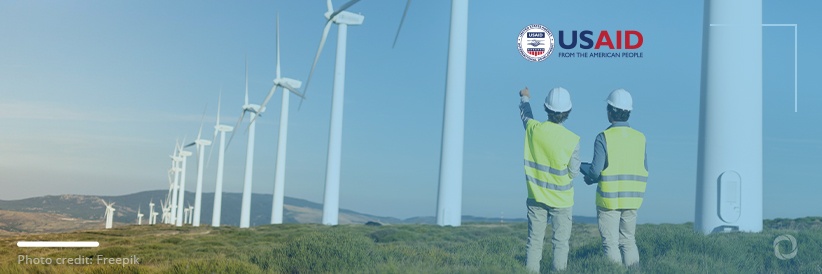The United States Agency for International Development (USAID) has launched the 2022–2030 Climate Strategy in order “to tackle the existential threat of climate change over this decade in a way that is truly transformational” according to the agency’s administrator, Samantha Power. This new Climate Strategy sets six ambitious targets that combine USAID’s increased efforts to halt the climate crisis.
The six high-level, ambitious targets to be achieved by 2030 were drafted to guide the agency-wide approach to reduce global greenhouse gas emissions, help partnering countries to build resilience to climate effects, improve operations and increase impact. They are Mitigation, Natural and Managed Ecosystems, Adaptation, Finance, Country Support, and Critical Populations.
According to Power, “these goals include preventing six billion metric tons of global greenhouse gas emissions – the equivalent of taking 100 million cars off the road for a decade – and conserving 100 million hectares of critical landscapes”. Furthermore, 500 million people will be enabled to improve climate resilience and “better prepare for and adapt to the impacts of climate change that are already wreaking havoc on marginalized communities”.
USAID has committed to mobilize US$150 billion in public and private finance for climate change mitigation and adaptation solutions in at least 80 countries by 2024. It will also support at least 40 partner countries to attain “systemic changes that increase meaningful participation and active leadership in climate action of Indigenous Peoples, local communities, women, youth, and other marginalized and/or underrepresented groups”.

The agency stated that since climate change is a global crisis, it affects virtually everything USAID does and threatens the development progress it has been supporting for more than 60 years. As temperatures and sea levels grow, people all over the world are experiencing more and more heatwaves, droughts, floods, cyclones, and wildfires that disproportionately affect those who live in poverty and are marginalized.
The USAID administrator added that “water and food are becoming more scarce amidst longer droughts, and communities at home and abroad are being battered by hurricanes that devastate coastlines, ice storms that knock out critical infrastructure, forest fires that engulf whole cities, and floods that submerge entire communities”.
She referred to the latest report released by the Intergovernmental Panel on Climate Change two weeks ago. It found that greenhouse gas emissions have been higher in the last decade than in any previous decade and that, without urgent action, the worst climate change effects will severely affect the poor and those who have contributed the least to climate change.
“Without urgent action, up to 100 million people could be pushed into poverty by 2030 due to climate change,” said Power.
She also stated that:
“Vladimir Putin’s war on Ukraine is showing all of us that an over-reliance on fossil fuels doesn’t just threaten our climate security, it threatens our national security and that of our allies.”
Through this strategy, USAID positions itself not only as a development agency but as a climate agency with the mission to protect the planet. Only with a hands-on approach can it support larger-scale transformations in agriculture, energy, governance, infrastructure, and health, particularly from climate-friendly businesses and jobs to more equitable and healthier communities.
“USAID’s convening power, global presence, longstanding partnerships, and breadth of technical expertise position us to make a real difference in this critical global fight. But no Agency or country can meet this moment alone,” concluded Samantha Power.

